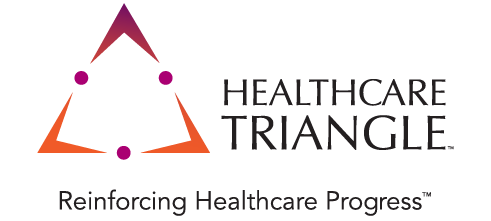Return to Revenue: Accelerate Your Return to Revenue
Healthcare Triangle
Jun 09, 2020

Proactively communicating with patients and the extended health community is now an absolutely essential part of business for healthcare organizations of all sizes. Surveys have indicated that 3 out of 4 consumers today will consider switching providers based on a single negative experience. In the midst of COVID-19 uncertainty, changing regulations, protocols, and financial circumstances, people need to know what to expect now more than ever before. What follows is a list of what should be considered essential business for health entities seeking to service, retain, and improve relations with patients in a greater capacity.
A Strong Communication Plan
Consistent, regular messaging is now mission critical for items such as: hours and operations, services available, safety measures and “safe care” protocols employed, contactless procedures, and options for virtual care.
Essential information needs to get distributed at extremely regular intervals for the foreseeable future. For most, that means at minimum weekly formal communication or announcements, and potentially more frequently.
An array of communication and engagement platforms. The Center for Connected Medicine reports 82% indicating the dominant patient engagement technology is the health system’s patient portal, commonly an extension of the EHR, so using that as a vehicle for regular information and correspondence should be priority #1. However, patients of all types also have an increasing desire for digital engagement avenues, as evidenced by the 2019 Salesforce Connected Healthcare Consumer Report

Educating – Internally & Externally
- With service volumes still below capacity and at manageable daily workloads, now is a great time to invest in review, revision, and education around patient financial assistance. Uninsured write-offs and discount policies, and alignment of patient-friendly payment plan options are good initial topics.
- Price transparency, coinsurance, deductibles, out-of-pocket costs, and general staff awareness of patient financial assistance options/impacts can follow. Use this extra time to make front-line staff informed patient advocates expressing empathy.
- Improve soft skills. Incredibly important for revenue cycle and front desk staff now is the ability to ask financial questions in a meaningful and appropriate manner. Organizations that have developed dedicated compassionate collection education programs have seen impressive results.
- It is also more important at this time for physicians, nurses, and APPs to have a degree of financial understanding and empathy that can be communicated to patients
- Things have changed dramatically for your primary payers as well. Don’t forget about working with them to ensure everyone has a shared understanding about new codes, regulations, documentation requirements, and telehealth-related procedures. Insurers and health plans consistently provide underwhelming communication and information to patients. Be a partner and ensure your patients have the information they need.
Community Engagement & Partnership
- Not only is it essential to engage with your historic patient population, but also now your entire extended community, including targeted competitor space.
- Local health entities, affiliates, referral partners, and really any establishment servicing patients need to know what to expect and how they can direct and inform customers.
- Partner with local financial institutions to find new ways and options for patients to pay during these potential periods of financial hardship. One great client summary of work is here.
- Reach out and solidify information and opportunities with entities that may help patients navigate or improve their social circumstances. Social determinants of health such as housing and food security continue to be key drivers in patient’s ability, motivation, and follow-through for proper care.
- Work with local collection agencies to develop scripts that are sensitive to circumstances and compassionate to the patient’s situation and financial welfare.
- Leverage vendor relationships and capabilities that help to achieve revenue efficiency, value, and cost control. If you don’t already have preferred and trusted partners, I can advise on a number that do excellent work (and some on contingency) in outsourced revenue assurance, IT/EHR optimization, and Managed Services/Support. Whether your goal is to plug holes in your revenue cycle, enhance billing and reimbursement streams, or continue with existing project and support needs with reduced staff and costs, proven partners are available at no-risk price points.
COVID-19 hit the US fast and hard, and it continues to wreak havoc on the financial health of both healthcare institutions and the patients they serve. The considerations above will help to ensure the journey back to comfortable financial positions is as smooth and quick as possible, and lasting long after the Coronavirus is gone.


